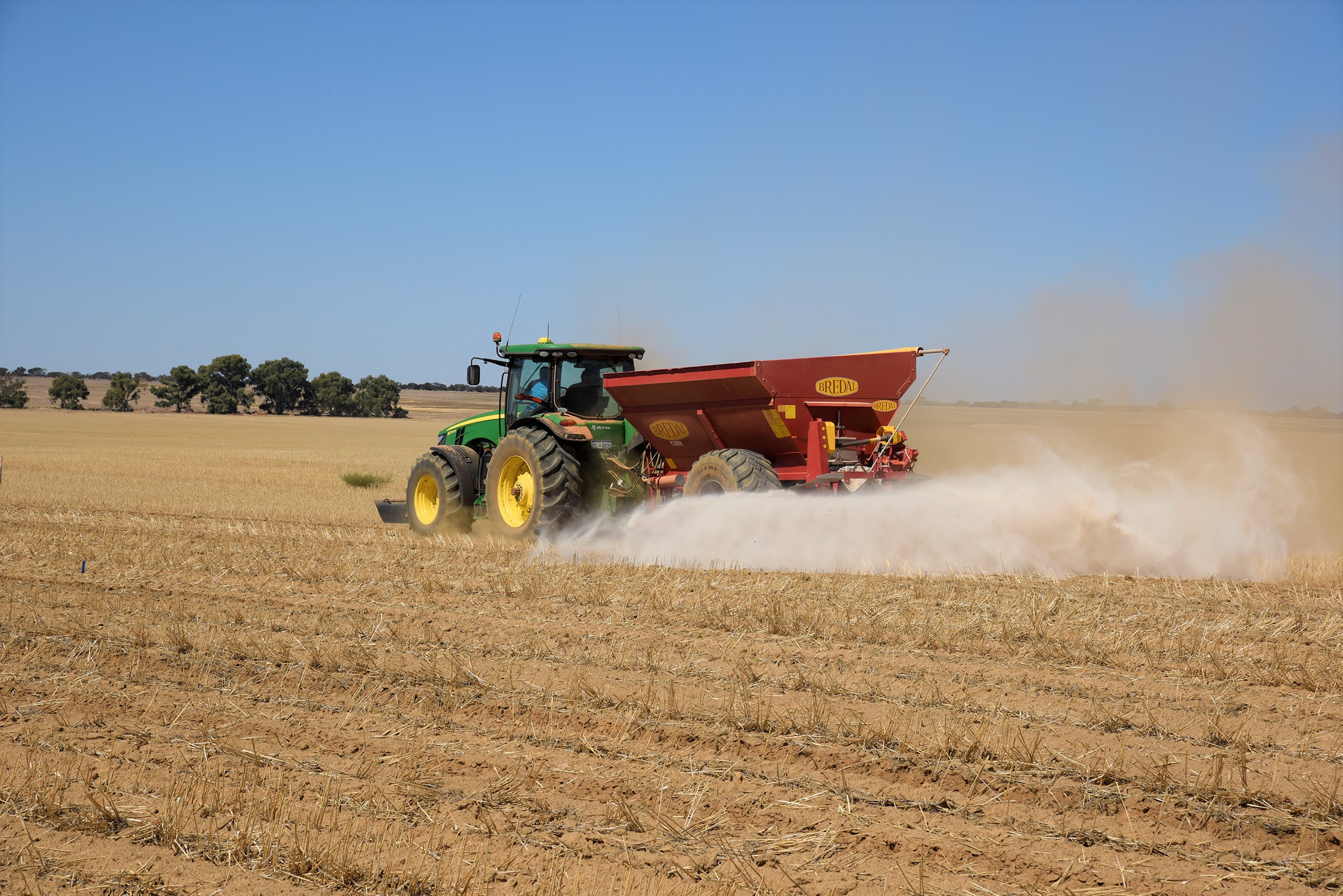WA Farm Data Sharing
The Great Lime Conundrum
Should you lime? How much lime? And when should you lime? Read more here about the WAFDS model and how it could help your on-farm liming decisions.
To lime or not to lime; and how much should I be liming?

Photo: Liming at Bob Nixon’s farm Kalannie, WA. Taken by Chris Gazey, DPIRD.
Lime has a great impact on yield, soil pH, soil aluminium and in turn, cash flow responses. But the questions remain, should you lime? How much lime? And when should you lime?
Joining forces with GGA, Curtin University and the Food Agility CRC, DPIRD has been working to create The WA Farm Data Sharing (WAFDS) model, starting with liming strategies.
Soil acidification is an inevitable consequence of productive agriculture, but there are ways to control and maintain a healthy soil pH for best yield outcomes.
Data collected over hundreds of trial-years by DPRID suggest optimum soil pH values measured in calcium chloride be at or above 5.5 in the topsoil and 4.8 in the subsurface.
DPRID’s senior research scientist Chris Gazey said the correlation between low pH soil and limited crop yield was an obvious and easily controlled variable with the correct liming program.
“Soil acidity is one of the biggest constraints to crop profitability, limiting yields on average by 13 per cent across about half of the Western Australian grain belt, costing growers more than $500 million per year,” Mr Gazey said.
As growers prepare for the upcoming cropping season, now is the time to consider a liming strategy to counteract this collective financial loss.
So where should you start?
It’s all about knowing your soil, the constraints impacting on your programme currently and whether your land needs maintenance or an overhaul recovery regimen.
Liming strategies involve more than just soil pH.
Other variables needing a growers attention include soil type, rainfall, and lime quality, as well as an understanding of the impact crop rotation and fertiliser programmes have on your farming system. Not an easy task.
Currently growers can use the iLime tool, a free downloadable mobile app from the Apple App store or Google Play, developed by DPIRD with investment from GRDC, to compare two liming strategies, however the grower needs to manually source and input their farm data, and repeat the process for each management zone, which can be a time-consuming process for large or highly variable properties.
This is where the WAFDS comes in.
The WAFDS is promising to change the way growers make complex investment decisions by unlocking the value in the data collected on-farm over several years to optimise return on investment in many key areas of their programmes.
The project is developing a whole-of-farm liming model that will leverage DPIRD’s eConnect platform to seamlessly transfer data from grower’s farm management software and other data silos to the model, and then back to the grower.
The seamless data transfers and cloud-computing will allow timely responses from models that are tailored for a farm’s unique situation and enable more informed decisions to be made.
By the end of the project, with a few clicks of the mouse, growers will be able to send the relevant data securely to the model. The model which will incorporate DPIRD’s current best practices via the iLime model will then run hundreds of different scenarios.
For example, the first scenario could explore recovering a limited number of highly acidic paddocks. Return on Investment would be calculated for multiple weather outcomes and commodity prices.
This could be compared to a scenario where a maintenance level is applied to productive paddocks that would be acidifying without sufficient application of lime. Again, this scenario is assessed for many different seasonal conditions.
The grower will then receive a subset of the tested liming strategies for them to choose the optimal one that best suits their situation. Each liming strategy will show in what percentage of years the strategy is predicted to be profitable. While not a crystal ball, statistically it is getting close.
Whilst the constraints on WA’s sand plain soils are by no means limited to acidity alone, this project will add value to the ongoing R&D into soil amelioration across the wheatbelt already funded by DPRID and GRDC.
Eventually the model created could be applied to pest and disease management, planning for managing drought and other challenges that growers face.
If you would like to participate, contact Alison Lacey of GGA to get onboard the WAFDS program, and allow us to do the manual labour for your next whole farm lime plan, via alacey@gga.org.au
